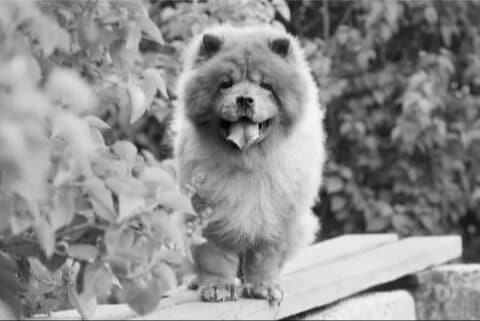
Owner-Handler Interview With Ralph Silva
Interview with an Owner-Handler Ralph Silva. Discover his inspirations, mentors, and profound connections with his dogs.
Home » Meet The Breeds » Chow Chow
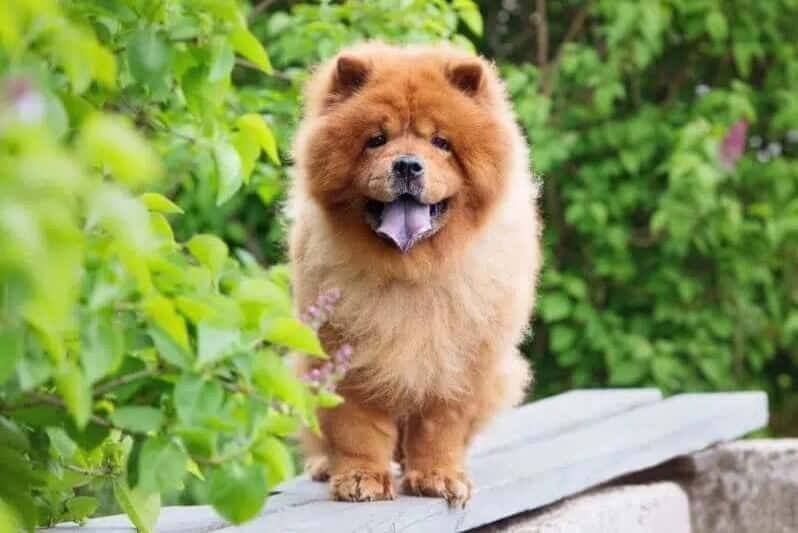
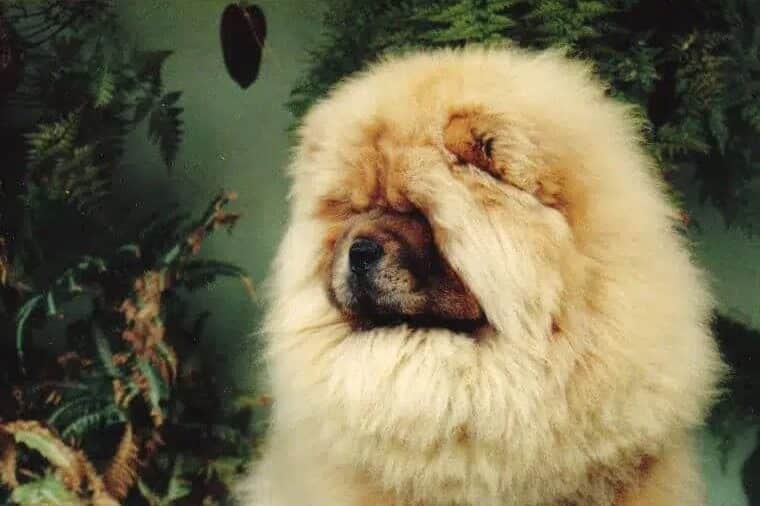

SHOWSIGHT MAGAZINE
The Chow Chow is one of the world’s oldest dog breeds. Although its exact origins are disputed, the dog that is often simply called the “Chow” has long been admired by people of distinction. Emperors, royals, and celebrities have all championed the striking good looks, independent spirit, and innate dignity of this ancient Oriental purebred. Rather aloof in personality and character, the Chow possesses several distinguishing features that have made it an undeniable favorite for centuries. The breed’s aristocratic bearing, dignified manners, and lordly scowl are just a few of its many laudable qualities. Add a lion’s mane, deep-set eyes, a blue-black tongue, and a stiff-legged gait and you have a unique canine that is as original as it is memorable.
Non-Sporting
17 – 20 inches
45 – 70 pounds
8 – 12 years
| Country of Origin | China |
|---|---|
| Bred For | Hunting, Guarding, Companionship |
| Known For | Lion-Like Appearance, Blue-Black Tongue, Loyalty |
| Popularity | Moderate |
| Temperament | Aloof, Dignified, Independent, Intelligent |
| Activities | Hunting, Herding, Guarding |
The story of the Chow Chow begins thousands of years ago in ancient China. Although the breed’s exact origins are unknown, ancient artifacts suggest the Chow was already established during the Han Dynasty (206 B.C.E. to 22 C.E.). Some scholars have suggested the ancestors of the modern breed accompanied Barbarians who invaded China from the West in the 11th Century B.C.E. Others have proffered the breed’s ancestors hail from the Arctic Circle, traveling through Siberia and Mongolia before arriving in China.
One Chinese emperor during the T’ang Dynasty (7th Century C.E.) is reported to have kept 2,500 “chow dogs” to accompany his army of hunters. Hunting, in fact, is one of the breed’s original functions, along with herding, drafting, and personal protection. One theory suggests the Rough- and Smooth-coated dogs were treated differently throughout the Chow’s early history. Though both varieties were bred for their working abilities, the Rough dogs were utilized for their fur, whereas the Smooth dogs were kept for their meat. The Chinese word chou is slang for “edible.”
The Chow Chow first traveled to the West in the late 18th century. When the breed arrived in England, the press referred to the breed as “the wild dog of China.” Perhaps owing to this reputation, those Eastern dogs eventually found favor in royal circles. When Queen Victoria acquired a Chow in 1865, the breed quickly became a favorite among all strata of society. Thirty years later, the English Chow Chow Club was formed just as dog shows were growing in popularity.
Mr. and Ms. Charles E. Proctor imported many Chow Chows to their Blue Dragon Kennels in the United States. “Chinese Drum” was bred by Mr. H. Sawtell and became the first of his breed to receive an American championship. This dog also became the first American-bred Chow to sire a champion; “Night of Asia.” In 1906, the AKC Breed Standard was approved and the Chow Chow Club of America was formed.
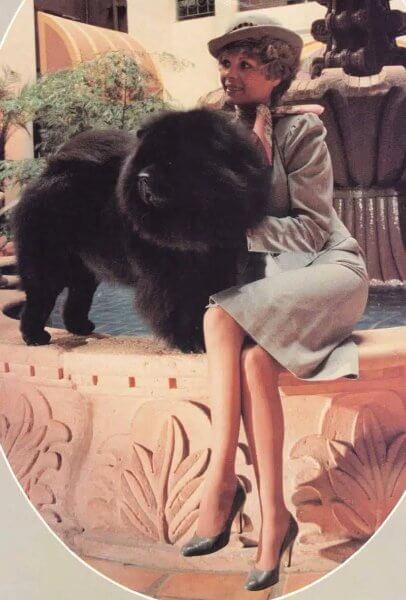
For well over a century, the modern Chow Chow has enjoyed considerable support among people from all walks of life—in both the East and the West. In the 1920s, the breed found favor among the glitterati of Hollywood, although the Chow’s popularity has ebbed and flowed with the changing times ever since. In 1986, the breed soared to prominence when 43,026 individual registrations were made with the American Kennel Club. Today, the breed is less popular as a companion but is still highly regarded by a discerning few for its many exceptional qualities.
An adult Chow Chow stands between 17 and 20 inches tall at the shoulder; the breed’s overall proportions are more important than its size.
Weight varies based on size, but the Chow generally weighs between 45 and 70 pounds at maturity.
The Chow Chow is a medium-sized breed with heavy bone and strong muscling. It has a close-coupled, square silhouette in profile. The distance from the forechest to the point of buttocks is equal to the height at the highest point of the withers. The Chow presents a picture of balanced proportions, with the distance from the tip of the elbow to the ground half the height at the withers. The male Chow should be masculine in appearance, while the female should have less overall substance.
Texture: The Chow Chow’s coat may be either Rough or Smooth. In the Rough variety, the undercoat is soft, thick, and woolly. The outer coat is abundant, dense, and straight, with coarse hair that stands off the body. The coat’s length will vary from dog to dog, but its thickness, texture, and condition are more important than its length. Around the head and neck there is a profuse ruff that frames the head. In the Smooth variety, the undercoat is similar, but the outer coat is hard, dense, and smooth, without the quantity, length, and distribution of the Rough variety. No trimming or shaping should be necessary except on the feet and below the hock. Puppy coats are typically soft, thick, and woolly overall.
| Standard Color | |
|---|---|
| Cream | ee |
| Red | ee |
| Cinnamon | ee |
| Black | ee |
| Blue | ee |
The coat of the Chow is solid in color, without any markings.
A Note About Color: The coat of the Chow Chow may be one of five clear colors, either solid-colored or solid with lighter shadings on the ruff, tail, and feathering. So-called “rare” colors like Brindle, Chocolate, Merle, and Piebald are not acceptable and are an indication of a cross with another breed. Red dogs can have lighter shadings of red. Black and Blue dogs can have gray shading and may even show a reddish tinge due to sun exposure. Cinnamon dogs can have lighter shadings. Cream dogs can vary in color from nearly white to a very pale red. Red dogs have a black nose, lips, and gums, with a dark palate and a dark blue tongue. Black dogs have a black nose and lips, a blue-black palate and gums, and a dark blue tongue. Blue dogs have a dark gray nose, blue-gray lips and gums, and a medium-to-dark blue palate and tongue. Cinnamon dogs have a dark gray nose, blue-gray lips and gums, and a medium-blue tongue. Cream dogs have a pinkish nose, black lips, and a dark blue palate and tongue.
The tail of the Chow Chow is set high and follows the line of the spine at its insertion. It is aways carried closely to the back, whether the dog is alert or relaxed.
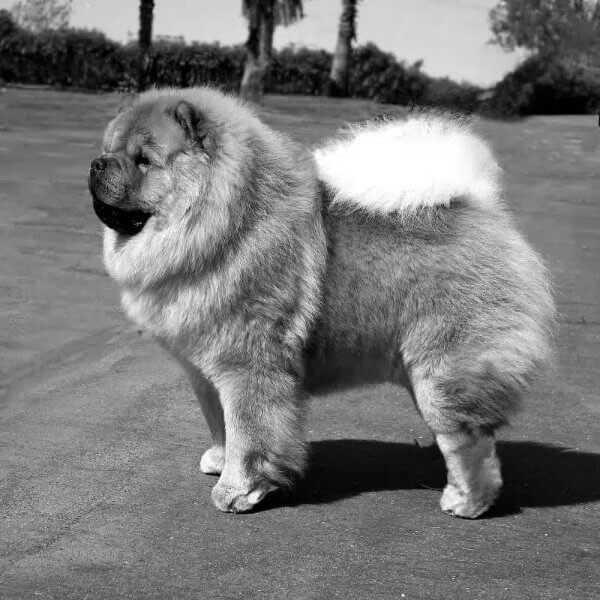
Choosing a Chow Chow as a companion requires a commitment that is as fearless and forthright as the breed itself. Although the breed has strong instincts and a sturdy frame, ownership does not come without its fair share of responsibilities.
The Chow Chow, while typically robust, is not without a few considerations that prospective owners should be aware of before committing to one of these aloof and intelligent dogs.
The average lifespan of a Chow Chow ranges from 8 to 12 years, but with regular health exams, a balanced diet, and moderate exercise, many can thrive well into the upper range.
While Chow Chows are generally hardy dogs, like all breeds and mixed breeds they can be predisposed to certain health concerns. Some of the more common issues include:
Regular veterinary exams can help to identify and manage issues early on. Owners of Chow Chows should be proactive about their dog’s health, scheduling routine screenings and being alert to any signs of distress or abnormal behavior.
The ancient and alluring Chow Chow is an aristocratic canine with a real independent streak. These dogs are typically aloof with strangers, but their loyalty to their owners knows no bounds. Chows are extremely devoted and form deep bonds with their family members. Because the breed is so strong, with an equally strong will, ownership requires both firmness and fairness.
Sometimes described as cat-like, the Chow Chow is among the cleanest of dog breeds. Chows tend to be as fastidious as felines, keeping themselves in fine form by avoiding mud and muck. Unlike many hunting and herding breeds, a Chow can be content just walking down a city street several times a day.
The Chow Chow’s intelligence, independence, and aloofness can make this breed a challenge for people who are new to dog ownership. Although the breed’s strong spirit is celebrated by experienced breeders, it can be a bit much for the novice owner. In the right hands, however, this loyal, protective, and quiet canine can make for a low-maintenance companion that yields very high returns.
Proper nutrition is essential for the Chow Chow’s vitality and longevity. A balanced and nutritious diet is the foundation of good health, so it’s important to feed a high-quality commercial dog food or a well-balanced homemade diet. Protein, fat, and carbohydrates are all important for maintaining health, both inside and out.
A healthy weight is crucial for the Chow’s overall well-being. Because the breed can have a hearty appetite leading to obesity, overfeeding should be avoided. Portion sizes should be based on the dog’s age, activity level, and overall health.
The thick coat of the Chow Chow means the breed can be susceptible to overheating. Fresh water should always be readily available, especially after meals and following any strenuous physical activity. In warmer climates, it is particularly crucial to provide clean drinking water and a cool place to rest after mealtimes.
Training an independent Chow Chow is a commitment that brings enormous rewards and plenty of responsibilities. Although the breed has a strong protective instinct, requiring puppies to be socialized from an early age, these dogs also form extremely strong bonds with their owners. This unshakable connection makes every training session a rewarding experience.
The Chow’s inherent independence requires patience and consistency on the part of the dog’s trainer. These dogs respond best to positive reinforcement techniques, so using treats, praise, and play as a reward can make each training session an enjoyable experience. Conversely, harsh methods can damage the bond that’s shared between dog and trainer, leading to a variety of unfortunate behavioral issues.
Because Chow Chows form strong bonds with their owners, separation anxiety can become a problem for dogs that are left alone for extended periods. Since this breed thrives on companionship, the Chow is happiest when it spends time at home, on the job, or on the street with its favorite person. Every shared moment offers opportunities to reinforce the bond that is achieved through training.
Despite the breed’s early history as a hunting and herding dog, the average Chow Chow doesn’t require a great deal of daily exercise. A few walks each day can be all the activity that’s needed to satisfy the dog’s physical demands. Indoors, a basket of toys can provide just enough stimulation to engage the Chow’s mind as well as its body.
Exercise is not just about maintaining a Chow’s physical fitness, it’s also about ensuring its mental well-being. Regular interactions with their owners can reinforce the bond that’s shared between the dog and its favorite person. The time spent together can alleviate any boredom and the undesirable behaviors that often result from loneliness.
Due to the breed’s dense coat, Chow Chow’s don’t tolerate excessive heat and humidity very well. So, when it comes to outdoor exercise, it’s important to avoid activities during the hottest parts of the day. Early morning and late evening walks can mitigate any discomfort that’s brought on by outings in warmer weather.
Although the Chow Chow doesn’t require much in terms of exercise, the breed’s profuse coat requires considerable attention to manage all the shedding. The dense double coat of both the Smooth and Rough varieties requires weekly brushing to remove the dead hair and stimulate the skin. Puppy coats are especially troublesome when they’re transitioning, so daily brushing is needed until the adult coat has come in.
Because the Chow’s coat is so dense, matts can easily develop in problem areas. Particular attention should be paid to the coat around the head and neck, behind the elbows and front legs, and on the thighs and tail. Only when the coat has been thoroughly combed through to the skin should a bath be given, followed by drying the coat completely on a cool setting.
Although most Chow Chows are inherently clean, their grooming needs are not limited to their coat. The skin, nails, ears, and teeth also need attention on a regular basis. Weekly trimming of the toenails will help to keep the feet in good form, as will weekly inspections of the ears. The folds of skin around the face and neck should also be examined for any problems, and the teeth should be scaled weekly to prevent tartar build-up.
Living with a Chow Chow is a unique experience, shaped by the breed’s history, temperament, and physical attributes. As much as these dogs are cherished for their Teddy Bear looks, prospective owners should be well-versed in the specific needs of the breed before taking on the responsibility of caring for one of these loyal guardians.
The Chow’s independent nature is often misconstrued as stubbornness. However, this strong and striking breed is simply self-confident in most situations and doesn’t need to be reassured all the time. The breed is not emotionally dependent on people in the way other breeds can be. A Chow chooses to enter into a relationship; it doesn’t wait for an invitation.
When it comes to accommodations, Chow Chows are adaptable. Apartment living can suit these dogs just fine, provided they’re given regular walks throughout the day. With more room to roam, most Chows will only choose to stick close to their favorite person to be aware of what’s going on.
The arrival of a litter of Chow Chow puppies can be an exciting experience for any preservation breeder. With their fluffy coats and playful antics, it’s easy to spend hours watching them interact with each other and their mother. Chow puppies are bundles of energy, eager to explore their surroundings and bond with members of their human families.
Caring for a Chow Chow puppy involves a variety of considerations. It’s a good idea to consult with the puppy’s breeder when it comes to feeding during the first year. A balanced diet that’s formulated for puppies is essential to ensure proper bone and muscle development. When it comes to housebreaking, the breed’s inherent cleanliness typically makes the process a snap.
Exercise is also a vital aspect of puppy care, but it should be approached with caution. Over-exercising a young Chow can put undue stress on developing joints and growth plates, leading to potential health issues later on. Short, controlled play sessions and leisurely walks are best until the pup reaches maturity.
A Chow Chow puppy thrives on human companionship and should be included in daily family activities. It’s important, however, that all indoor and outdoor spaces are puppy-proofed to avoid accidents and escapes. Socialization is important too, for mitigating the breed’s protective nature, and regular veterinary check-ups are vital for monitoring growth and ensuring the pup is developing as it should.
The Chow Chow is more than just a tough-looking Teddy bear. These dogs can enjoy participation in dog sports just as much as the next breed, although training should consider the breed’s independence as well as its intelligence.
Engaging a Chow Chow in various activities and organized sports not only highlights a Chow’s many talents, it also satisfies the dog’s desire to share the experiences with its favorite person.
The Chow Chow is recognized by the world’s leading registries and kennel organizations, which categorize the breed into a specific Group based on its unique characteristics. This breed is recognized worldwide under the following Group designations:
| Organization | Group Designation |
|---|---|
| AKC (American Kennel Club) | Non-Sporting |
| UKC (United Kennel Club) | Northern |
| CKC (Canadian Kennel Club) | Non-Sporting |
| ANKC (Australian National Kennel Council) | Non Sporting |
| RKC (The Royal Kennel Club) | Utility |
| FCI (Fédération Cynologique Internationale) | Group 5: Spitz and Primitive Types; Section 5: Asian Spitz and Related Breeds |
The ideal Chow Chow is described by a Breed Standard that is approved by each of the world’s leading registries and kennel organizations. The Breed Standards for this breed may be found in the following links:
| Organization | Breed Standard |
|---|---|
| American Kennel Club | AKC Chow Chow Breed Standard |
| United Kennel Club | UKC Chow Chow Breed Standard |
| Canadian Kennel Club | CKC Chow Chow Breed Standard |
| Australian National Kennel Council | ANKC Chow Chow Breed Standard |
| The Royal Kennel Club | RKC Chow Chow Breed Standard |
| Fédération Cynologique Internationale | FCI Chow Chow Breed Standard |
Purebred dogs are supported by members of breed clubs who dedicate their efforts for the betterment and preservation of a specific breed. For the Chow Chow, national clubs in various countries play a pivotal role in maintaining the Breed Standards, organizing events, and disseminating information about the breed to club members and potential owners alike.
In the United States, The Chow Chow Club, Inc. is the AKC-recognized “parent club” for the breed in America. Founded in 1906, the club and its members remain committed to the breed, promoting responsible breeding practices, upholding the organization’s by-laws, and organizing National Specialty shows and other social and competitive events.
In Canada, the Chow Chow Club of Canada, Inc. takes the lead in serving the needs of the breed. Like its American counterpart, this association is dedicated to the welfare of the Chow, fostering education and hosting events that celebrate the unique characteristics of these extraordinary dogs.
In the United Kingdom, the Chow Chow Club is the breed’s parent club. Established in 1895, the association not only offers a platform for breeders and owners to connect and compete, it also actively champions the betterment of the breed’s health and welfare throughout the British Isles.
Membership or affiliation with these clubs can offer Chow Chow enthusiasts access to a wealth of knowledge, regional and national events, and a community that shares a common love for this ancient Oriental breed.
Rescue groups play an invaluable role in supporting the needs of individual dogs, providing shelter, care, and new beginnings for any Chow Chow in need. Rescue organizations and their volunteers are dedicated to the rehabilitation and rehoming of these dignified and deserving companions.
In the United States, the CCCI Welfare is a committee of members appointed by The Chow Chow Club, Inc. The group focuses on the well-being of the purebred Chow as a pet in today’s society. The committee establishes a central point of contact for people seeking an abandoned or unwanted Chow, maintains a directory of volunteers, and provides information, resources, and support to veterinarians, animal shelters, and others who care for homeless Chows.
For those in the United Kingdom, Chow Chow Rescue Service and Scottish Chow Rescue offer support, rehoming services, and education for individuals looking to adopt one of these powerful protectors. Acquiring a rescued Chow can be a rewarding experience, as it provides a loving home to a loyal dog in need.
Yes, Chow Chows shed. The breed’s thick, double coat sheds regularly, especially during the spring and fall. During these seasons, it’s necessary to brush the coat thoroughly to the skin to prevent uncomfortable matts from forming.
No coated dog is truly hypoallergenic, but some breeds are better suited for people with allergies than others. Because they have a thick double coat that sheds regularly, Chows can spread more dander around, which can be problematic for allergy sufferers.
The dense coat of the Chow Chow gives this breed the appearance that it is larger than it truly is. Typically, the breed stands about 17 to 20 inches tall at the shoulder and weighs between 45 and 70 pounds.
The Chow has had the reputation of being quarrelsome and even aggressive. However, these claims have usually resulted from a misunderstanding of the breed’s innate aloofness and its general disinterest in strangers.
On average, the Chow Chow has a lifespan of 8 to 12 years, though some can live longer with proper care, a balanced diet, and regular veterinary check-ups.
Several theories exist to account for the breed’s genesis. Some claim a Western invasion brought the dogs to the East, whereas others support an origin above the Arctic Circle. In either case, the Chow is an ancient breed and one of the oldest of all purebred dogs.
Chow Chows can get along with cats, but only if introduced properly and socialized from a young age. As with any dog, however, it’s best to monitor all interactions to ensure both the dog and cat feel safe and comfortable with one another.
Chows are somewhat unique in that they are typically aloof, even at home with the family. They tend to greet family members with restraint. This reserved personality, however, doesn’t mean the dog isn’t happy to be with the people it cares about most. It simply means it doesn’t feel the need to express its happiness by losing its dignity.
Chow Chows tend to bond deeply with one individual. Instead of spreading the love around, these dogs are often content to spend time with one member of the family. However, they do like to check in every so often with everyone else.
Because Chows form a tight bond with their families, these dogs do not enjoy being left alone for extended periods. They can easily become bored, anxious, or even depressed, leading to undesirable behaviors that result from separation anxiety. It’s best to consider a pet-sitter or dog walker to alleviate any boredom and loneliness caused by an owner’s busy schedule.
Chow Chows are considered low maintenance in terms of their personality, but high maintenance when it comes to grooming. The breed’s thick, double coat requires regular brushing to prevent matting and to manage the shedding. In terms of exercise, these dogs are typically content with several walks each day and some playtime with their favorite person back at home. It’s important to remember that proper training and socialization are necessary to ensure these intelligent and independent dogs are well-behaved and well-adjusted in public settings.
Where Champions Are Celebrated! | Est. 1992.

Interview with an Owner-Handler Ralph Silva. Discover his inspirations, mentors, and profound connections with his dogs.
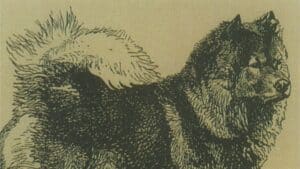
Delve into the Chow Chow’s breed type evolution, discussing historical standards, functionality, and the quest for the perfect specimen.

Jan Reed is the breeder behind DesertMoon Chow Chows.Read about the kennel’s beginnings, puppies, and much more!

Jan Reed is the breeder behind the DesertMoon Chow Chows. Read about the kennel’s beginnings, champions, dogs, puppies, and more!
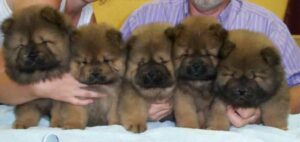
Interview with Non-Sporting Group Breeders Michael & Linda Brantley – We live in Lubbock, Texas, and have been in dogs for 66 years.
The best way to ensure a long and happy relationship with a purebred dog is to purchase one from a responsible breeder. Not sure where to begin?
Contact the National Parent Club’s Breeder Referral Program, which is listed on the AKC Breeder Referral Contacts page.
